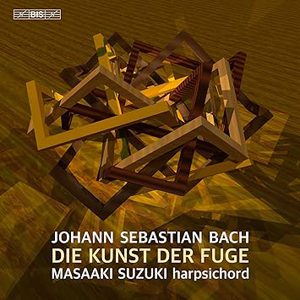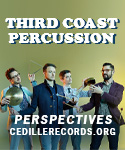Although Masaaki Suzuki’s solo harpsichord Bach recordings span several decades, his technical and musical consistency seems to defy time, as borne out in The Art of Fugue. He continues to use a Willem Kroesbergen harpsichord modeled after a Flemish Baroque-style instrument, whose transparent timbres befit the vocal orientation governing his phrasing. For example, his tempos never move faster nor slower than one can comfortably sing. As a result, the contrapuntal lines accommodate Suzuki’s breath pauses, arpeggiations, agogic adjustments, and ritards at cadences.
This is especially true in the four Canons. Ornamentation may be conservative, yet Suzuki’s embellishments always grow from the movement of phrases rather than being superimposed from without. This allows the pause right before Contrapunctus I’s coda to emerge less abruptly than usual. Suzuki plays looser than others with No. 2’s dotted rhythms, while his flexibility of line in No. 3 gives the music’s chromatic tension broader effect. However, similar pushing and pulling often dissipates No. 4’s continuity.
In No. 5, Suzuki presses ahead a bit much for my taste; a slower tempo would better allow the canonic sequences to register at the fugue’s midpoint. Suzuki’s double-dotting throughout No. 6 (“in stylo francese”) imposes an interior triple-meter “swing” onto music that usually unfolds with the feeling of duple meter. Slightly faster and firmer basic tempos would have imparted more unity and shape to the extraordinary multi-thematic Nos. 8 and 11. Conversely, the types of vocal inflections I discussed at the outset cast the virtuosic No. 9 in conversational light.
Suzuki’s shapely animation in the four-voice Mirror Fugues contrasts to those heavily austere readings that players seem to favor more than listeners. He swings briskly through extroverted three-voice Mirror Fugues as well as their four-handed counterparts, helped out by his son Masato on second harpsichord. And Suzuki deserves credit for not turning the final unfinished Fugue into a monument; my only quibble concerns his ritard on the incomplete last phrase. The effect dissipates the sudden dramatic impact of breaking the music off in tempo.
In lieu of Bach’s completion, Suzuki follows the tradition of placing Bach’s valedictory chorale prelude Wenn wir in höchstein Nöten sein at the end. All in all, a fine Art of Fugue that complements my harpsichord reference versions. BIS’s superb sonics and Bach scholar Christoph Wolff’s in-depth annotations also deserve kudos.
































